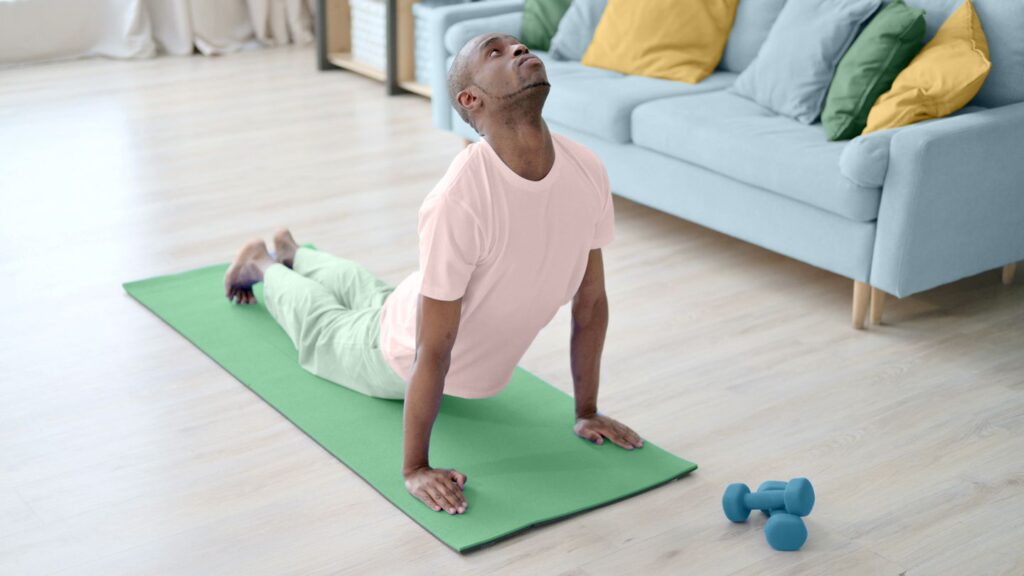“What’s important here is how little exercise is needed to make a difference. It shows that even small, consistent efforts can trigger real physiological adaptations when done regularly,” says study author Miguel Ángel Rodríguez, a doctoral candidate and researcher at the University of Oviedo in Spain.
“It helps reinforce the message that every move counts,” he adds.
Quick, Intense Bursts of Exercise Had a Real Impact
The study, published in the British Journal of Sports Medicine, analyzed the effects of “exercise snacks” — short bouts of exercise performed throughout the day — on cardiorespiratory (that’s heart and lung) health, muscular fitness, and other measurements including body fat percentage and blood pressure.
Researchers looked at data from eleven randomized clinical trials that included more than 400 adults ages 18 to 80 in Australia, Canada, China, and the United Kingdom. Nearly 70 percent of participants were women, and all reported being physically inactive before the trials began.
The participants completed at least two daily exercise snacks (defined as moderate-vigorous to near-maximal physical activity for five minutes or less), three times a week or more, over a period of 4 to 12 weeks.
Key findings included:
- Exercise snacks like stair-climbing and body weight exercises significantly improved heart and lung fitness in participants ages 65 and younger.
- Exercise snacks such as tai chi or leg-focused strength exercises significantly improved muscular endurance in participants ages 65 and older.
- A large majority of participants (83 percent) were likely to stick to the exercise snack routines, suggesting that regular bouts of activity could make a real difference outside a study setting.
The benefits seen in this trial are a big deal because cardiorespiratory fitness reflects a person’s overall health and disease risk, says Kathryn Weston, PhD, a senior lecturer of physical activity for health at the University of Strathclyde in Scotland, who has researched the impact of exercise snacks on health outcomes.
“Cardiorespiratory fitness can be described as a physical trait, reflective of the integrated function of numerous bodily systems to deliver and use oxygen to support muscle activity during exercise and physical activity,” she says.”
Exercise Snacks Didn’t Seem to Affect Blood Pressure or Weight — But There May Be a Catch
There could be a few factors behind the lack of improvement in heart health markers seen in this study, says Matthew Jones, PhD, an exercise physiologist and senior lecturer at the School of Health Sciences at the University of New South Wales in Australia.
Dr. Jones, who was not involved in the research, has studied the effects of short exercise sessions on cardiorespiratory health and other outcomes.
“Changes in blood pressure, blood lipids, and body composition [the ratio of muscle to fat] by exercise usually require larger doses of exercise to see significant improvements, and most of the exercise snack interventions included in this review used relatively modest doses of exercise,” Jones says.
“Combining exercise snacks with dietary modification might be an effective way to improve these parameters more, he says, explaining that the effect of combining these approaches might be more effective than exercise snacks alone.
Weston says that the study design might have played a role, as well. “The varied ‘dose’ of the exercise snacks — snacks across the included studies were performed at different intensities, using different modes of exercise, and completed over different periods of time — may also partly explain the lack of meaningful changes here,” she says.
Why Our Bodies Need Movement
“This is a classic principle in exercise physiology: The less fit you are, the more noticeable your initial improvements will be when you start exercising. If you’re already very active, a few extra exercise snacks probably won’t change much. But for a sedentary office worker, these small bouts of exercise can be life-changing,” says Tam.
“While these exercise snacks aren’t a replacement for traditional workouts or a strategy for major weight loss, they are a practical first step to becoming healthier,” he says.
Exercise Snacks to Get You Moving
Weston and Jones offered several “snacktivity” ideas for people without underlying health conditions or physical limitations:
- Stair-climbing for three to four flights
- Body weight exercises, like squats, static lunges, step-ups, and push-ups
- Resistance band exercises, such as bicep curls or pull-aparts
- Walking-based exercises, like high-knee marches or jogging in place
To sprinkle them throughout your day, Tam suggests breaking up your sitting time every 45 minutes to an hour, aiming for 20 to 30 reps per minute for exercises like squats. “Doing six to eight one-minute bursts of exercise each day can really add up,” he says.
It doesn’t take long for most people to notice a difference, Rodríguez says. “Even within a few weeks, people may notice improvements in stamina, energy levels, and functional capacity. For example, climbing stairs with less effort or recovering faster after exertion,” he says. “As we like to say, every move counts, and consistency always wins.”

